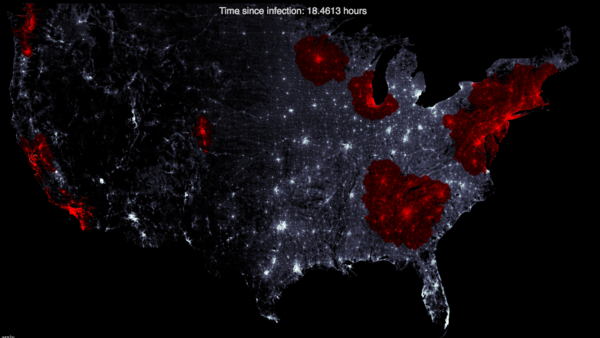8 Scientific Theories That Totally Change Zombie Films
6. It Would Have To Be Airborne

F**king quickly, if this outbreak simulator is anything to go by.
If normal outbreaks are anything to go by, getting an infection off the ground without it becoming airborne is actually pretty tricky. Modern real-world epidemics can have a death tolls ranging from 5 to 5,000 - bad, but not exactly apocalypse level. Even the HIV/AIDS epidemic, which is so far estimated to have killed nearly 300,000,000 people, hasn't rendered the world a post-apocalyptic hellscape.
As we've discussed, shambling human corpses make for pretty appalling vectors. They're big, slow (even the fast ones) and vulnerable to things like being shot with a tank. Microbes, however, are not any of these things.
So, alternatively, you could go down the Walking Dead route (spoilers ahoy): everybody becomes infected, presumably via air and/or water, but don't present any zombie symptoms until the point of death. This would also make it much harder to control as it spreads silently and invisibly - much harder to spot, and more to the point shoot, than the foaming zombie gnawing on your leg.
In the latter scenario, the apocalypse spreads pretty much at the rate of death around the world, which is much faster. Then, the presence of brain-hungry zombies only serves to expedite the process, creating the runaway apocalypse scenario we see in the movies.